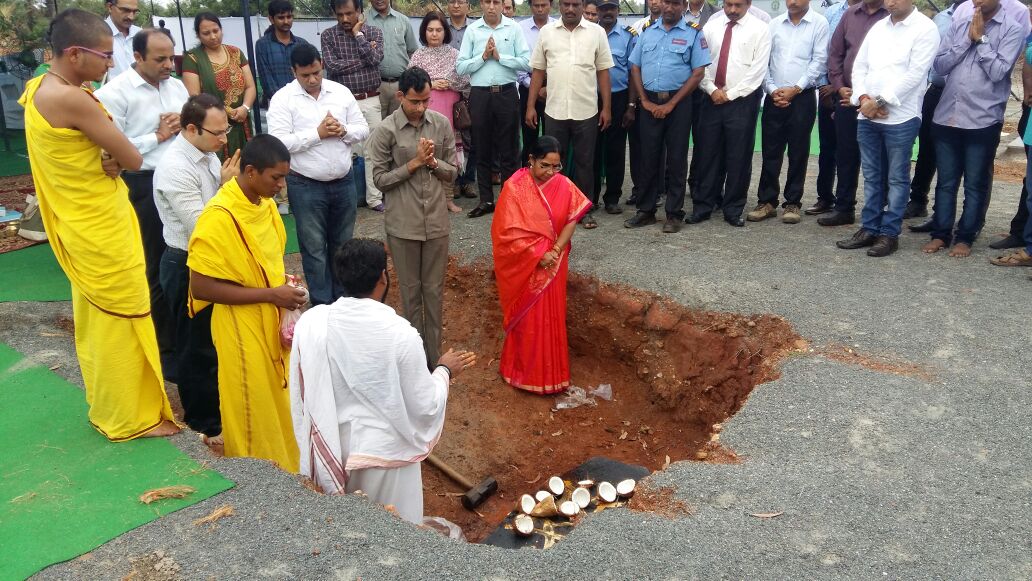

President, HORIBA Medical (India) Pvt. Ltd.
Studies have established beyond doubt that most of the breakdowns are found in the laboratories which are using spurious or locally manufactured duplicate reagents to run their hematology analysers, writes Dr Rajeev Gautam, President, HORIBA Medical (India) Pvt. Ltd.
Should a doctor prescribe spurious medicines to his patient? Have you ever used duplicate fuel in your personal vehicle? Do you allow your child to go for local soft drink instead of Coke or Pepsi? And, last but not the least, will you ever use Koolgate instead of Colgate for your dental hygiene, that too just to reduce expenditure of running your personal life? Hopefully, all of us may give a unanimously same response, without our level of education or profession.

Considering same intentions under similar grounds, this also applies when we are talking about hematology analyser. The consequences are more severe and long-term because its not just your vehicle, your single patient or your personal dental hygiene but it is about the entire population getting served by the results of that hematology analyser. All those generated reports will guide umpteen number of surgeries and treatment protocols based on the values it generate after consuming reagents fed into its system. The quality of reagents will decide the quality and reliability of results. In turn, quality and reliability of results will decide the success of the treatment or surgery or avoiding the same.
What are Original Reagents?
Any chemical formula or solution prepared under strictly controlled standard conditions of temperature and pressure, utilising standardised and uncontaminated ingredients procured from standard and registered by authorised bodies or vendors following internationally acceptable standard GMP procedures and SOP norms is considered as an original reagent.

What are Spurious or Duplicate Reagents?
Any chemical formula or solution prepared under non-standard conditions of temperature and pressure, utilising sub-standard or contaminated ingredients procured from non-standard or non-registered sources or vendors without following any standard GMP norms may be considered as a spurious or duplicate reagent.
Research performed by team of expert internal engineers by various IVD companies clearly unearths that most of the breakdowns are found in the laboratories which are using spurious or locally manufactured duplicate reagents to run their hematology analysers. The various reasons cited by the laboratory authorities are cost saving, easy supply, workload, non-availability of original reagents or lack of manufacturing facility with the instrument manufacturer.
We may consider any factor but the effect remains substandard results, unreliable outcomes and indirect implications on the instruments performance and life. So, what are the factors promoting usage of duplicate reagents?
Cost Saving
Saving cost is one of the commonly cited reasons by laboratory staff for using local or substandard or duplicate reagents.
However, in the long-run these reagents negatively affect the precision of the instrument results. To an extent, it also shortens the operational life of the analyser without even showing any visible symptomatic changes that are directly observable. Saving the cost at the cost of quality and life is not a rational choice for any scientifically-driven laboratory focused on patients health.
Easy Supply
Easy supply by local vendors is also one of the reasons for choosing spurious reagents by the laboratories. This reason, although not convincing, but somewhere needs to be looked upon by the IVD companies manufacturing the hematology analysers that the reagents that are available round-the-clock and are strategic logistic arrangements are made based on the local conditions and requirement of the reagents. Companies need to ensure that original reagents are made available in the territory where the installations are made on a regular basis and periodic forecasting of the requirement as per the local needs.
Laboratory Workload
Although, superficially, we may say that laboratories with heavy workload need constant and easy flow of reagents. Otherwise, to keep the work at pace, they may go for the local reagents. However, it can be easily analysed that for those laboratories where workload is heavy, needs better and more conscious usage of reagents. As these laboratories are more prone to get their analysers giving wrong results or contamination, chances are much higher in these laboratories. These laboratories are also more prone to human errors which can further complicate the matter, when it comes to patient health outcomes. Thus, it is suggested that these laboratories must ensure that they are using original and manufacturing company based reagents to bring the acceptable quality in their report.
RESEARCH PERFORMED BY TEAM OF EXPERT INTERNAL ENGINEERS BY VARIOUS IVD COMPANIES CLEARLY UNEARTHS THAT MOST OF THE BREAKDOWNS ARE FOUND IN THE LABORATORIES WHICH ARE USING SPURIOUS OR LOCALLY MANUFACTURED DUPLICATE REAGENTS TO RUN THEIR HEMATOLOGY ANALYSERS.
Lack of Manufacturing Facility with Analyser Company
Most of the companies, especially in a country like India, are the second hand distributors of the hematology analysers. This further complicates the matter and creates more serious concern to the matter of spurious reagents. As these instruments are manufactured on Original Equipment Manufacturer (OEM) basis, the distributing company has less knowledge about the impact of spurious reagents. Just to increase the sales, they never keep their customers informed about the negative outcomes of using duplicate reagents manufactured locally. Instrument manufactured in China under the assumptions based on Chinese environment and culture, but the reagents are made by local Indian manufacturers based on the Indian scenario and economic standards. This negatively impacts the market not just in terms of cost but also the overall perception of the customer about the performance of the analysers available in the Indian market.
This is one of the critical factors to be considered by any medical laboratory owner that they must choose the hematology analyser more or less from the company which not only has good number of installations, but also manufactures the analyser in-house. It also has the capacity to manufacture reagents used in the analyser. This not only enhances the credibility of the manufacturing company in the market but also helps in winning the confidence of the pathologist.
SAVING COST IS ONE OF THE COMMONLY CITED REASONS BY LABORATORY STAFF FOR USING LOCAL OR SUBSTANDARD OR DUPLICATE REAGENTS. HOWEVER, IN A LONGRUN THESE REAGENTS NEGATIVELY AFFECT THE ACCURACY AND PRECISION OF THE INSTRUMENT RESULTS.
MERITS OF USING ORIGINAL REAGENTS
Original reagents are strictly prepared on scientific basis and composition is kept constant as per the technology requirement.
- Scientifically driven Hydraulics of the hematology analyser can be kept intact only by using original reagents.
- Original reagents show minimum or negligible variation with change in reagent LOT whereas locally manufactured reagents may show damaging variation when change in reagent LOT occurs due to substandard protocols and SOPs used to manufacture them in a small unlicensed set-ups built locally.
- Original reagents maintain pressure and vacuum requirements to be maintained by the O-rings and valves throughout analysis process inside the analyser.
- Last but not the least, original reagents keep the warranty and accountability of the manufacturing company intact and build mutually better and trustworthy relationship with the customer.
Drawbacks Of Spurious Reagents
Some of the baneful consequences of using duplicate reagents on your hematology analysers are:
- Lot to Lot variation of composition of reagents
- Unlicensed or non-standard manufacturing facility
- Non-compliance with GMP Guidelines for reagent manufacturing
- Affects Hydraulics parameters like pressure and vaccum creation in sample and reagent flow tubing
- Indirect breach of trust and confidence with Instrument manufacturer and loss of long-term support and service agreement
Best Practices
- Always use original reagents manufactured or provided by the instrument manufacturer
- Design forecasting for your laboratory to avoid short notice supply and thus forced buy from local manufacturer
- Never cut cost on reagents to compromise quality and life of instrument performance
- Maintain trustworthy relationship with your instrument manufacturer
- Last but not the least, get registered on www.habx.in to know more about hematology research, important issues and concerns.
CRITICAL ANALYSIS
How change in reagent affects blood analysis by hematology analyser?
Hydraulics: Critical balance between engineering and chemistry blood cell analysis uses one of the universal principles of science, i.e., hydraulics, which is very sensitive to the changes in properties of liquid, liquid flow, temperature, pressure, chemistry or any other flow related factors. It is an applied science of engineering and chemistry. Whenever any of the two shows change, the effect on the other is seriously pronounced, anyhow. Most Hematology analysers consist of special apparatus to maintain hydraulics, and thus, give accurate and balanced functioning of all its parts. This hydraulics apparatus consists of tubing, O-rings, aperture, valves, chambers which gives route of flow for reagent and sample consequently responding to any changes found in blood samples or in reagents.
Any change in the chemical properties, composition or flow properties like viscosity or surface tension of the liquid will affect its flow through the tubing, its ability to cross the aperture and ability to analyse the cells etc. These will directly or indirectly impact the overall process of cell analysis and counting by the analyser.
Be a part of Elets Collaborative Initiatives. Join Us for Upcoming Events and explore business opportunities. Like us on Facebook , connect with us on LinkedIn and follow us on Twitter , Instagram.












